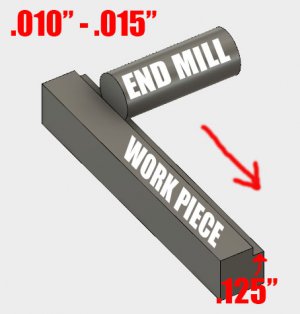Oilite bushings do not require an oil hole because the material itself is porous. That being said, if the bushings were changed by the PO whom you mentioned, they may not be Oilite.
The original belt on the MFB and MFC was a 5L280. I would install that as soon as you have time to pull the spindle and back gears to do so. I expect that the 1/2" link belt was slipping. However, if the pulley wasn't getting hotter than the bearing, that wasn't directly your major problem. But if it was and you tightened the belt to make up for it, you were probably putting too much side load on the bushing, causing it to overheat.
On your other question, I wish that you had included a photo of the workpiece mounted in the mill. Are you cutting on the back side with the end of the milling cutter or on the top with the side? If the former, you should be cutting with about 85% of the 1/2" diameter, not 2% or 3% of it. And technically your DOC is 1/8". I have done a lot of whittling with the milling attachment on my 3996 (because my MFA isn't running yet), and I usually use 85 to 90% of the diameter of a 5/8" or 3/4" end mill, with a DOC of 0.010" to 0.020" in mild steel or 0.050" to 0.100" in aluminum.

